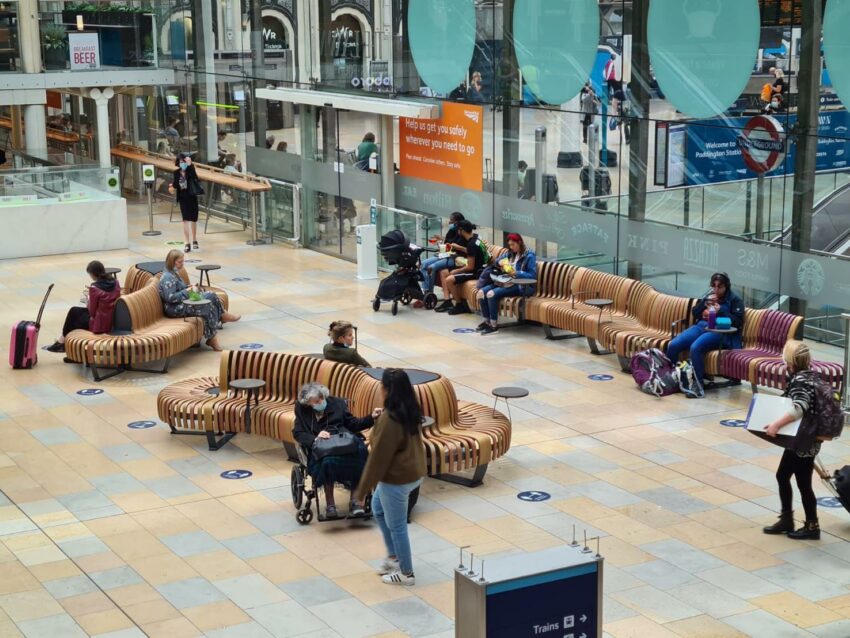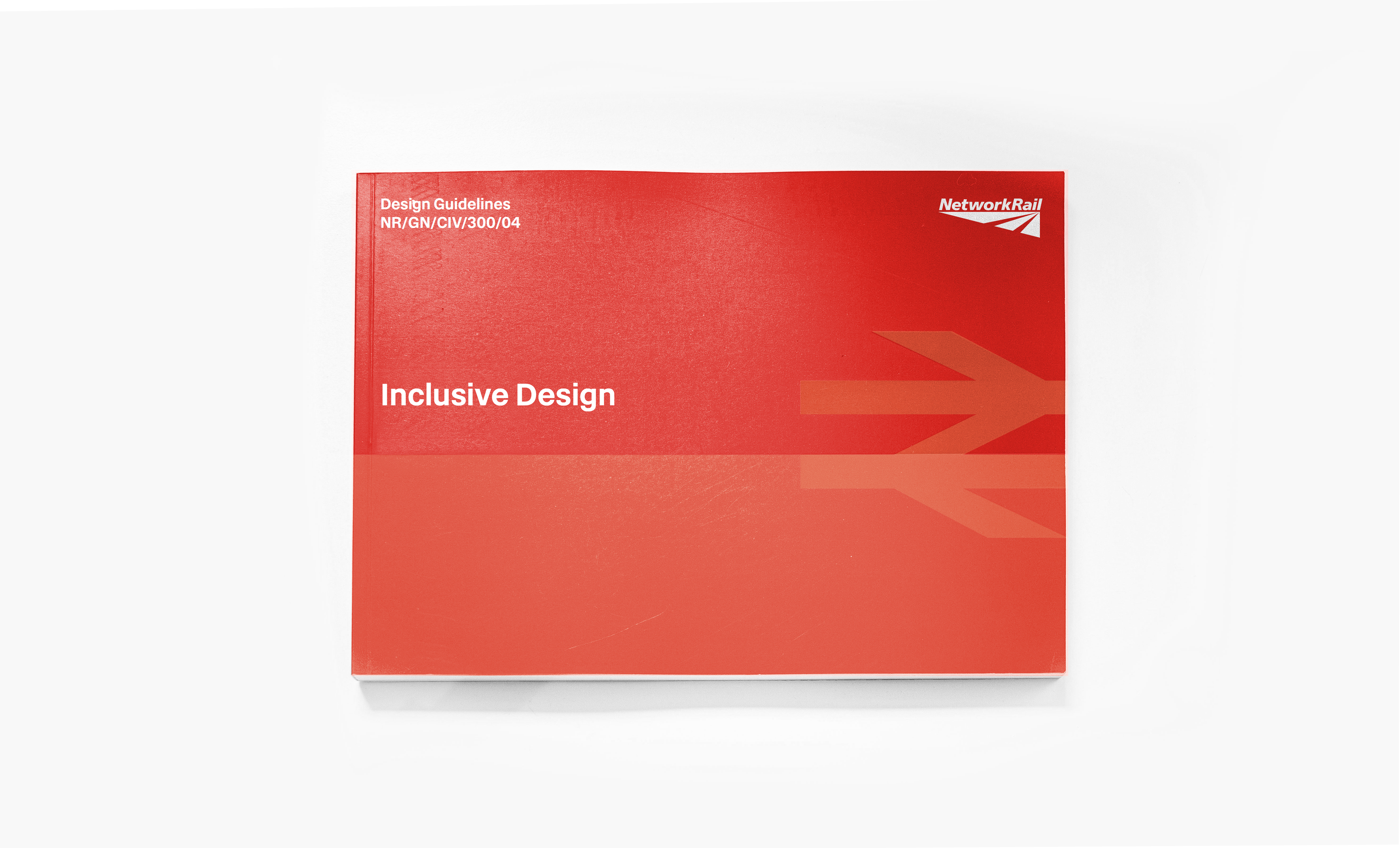Recognising best practice
The task of authoring a new Inclusive Design Manual was challenging. We brought together experts from within Network Rail and outside, as well as a diversity of users to understand current best practice, and provide a forward-thinking view.
The guidance needed to develop a narrative which was both knowledgeable and engaging to be accessible for project managers, designers and experts alike.
Our methodology for reviewing and auditing the existing documents was one of collaboration, working with Network Rail’s technical leads through short regular meetings. We used thumbnails to deconstruct each page showing relative length of sections, balance of text and images across the document, and more in-depth page-turn of individual pages to establish the look, feel and content of the guidance document.
A persona based approach
We adopted a persona-based analysis of the passenger experience to understand the cognitive loads and stress levels at each point in their journey, and how these can be addressed by applying the principles of inclusive design.
The new document was structured around the passengers’ journey on local transport networks, and pedestrian routes through the station environment, up to boarding the train. Issues encountered by persona groups are described in terms of Who & Why, together with design considerations and signposting relevant standards.
The Design Manual defines a process that aims to deliver inclusive and accessible design for the range of human diversity including culture, gender, age including the elderly, and people with a wide scope of requirements including cognitive, sensory, mobility disabilities and people with pushchairs, luggage, and bicycles.
The Inclusive Design Manual is one of nine documents we have developed for Network Rail. They act as a common frame of reference for all parties involved in the design, development and operation of Network Rail’s transport infrastructure.

Sustainability
Inclusive design is fundamental to successful placemaking and can help to deliver socio-economic benefits to the communities served by the rail network.
The station should be at the heart of communities and a place that both welcomes and serves local people and station users. It should embrace the needs of the community and address the local context through attractive and meaningful connections.
The Inclusive Design Manual reinforces the importance of station development as a contextual response to the site. One that acknowledges the local heritage and cultural diversity of an area to create a unique place which is vibrant, a catalyst for growth and environmentally sustainable.

